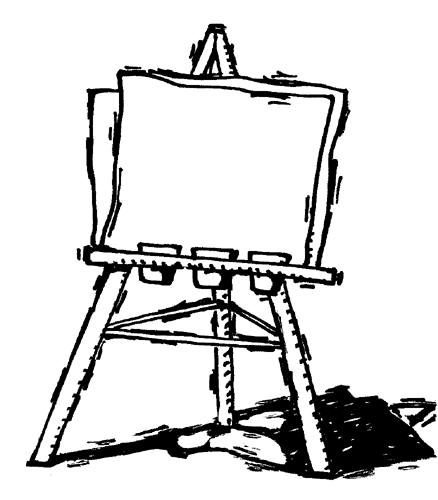How to Handle Criticism Without Melting Down, Clamming Up or Flipping Out
Do You Know Any [tag-tec]Difficult People[/tag-tec]?
Is it challenging for you to stay calm and present in the face of [tag-tec]critical people[/tag-tec]–you know those people that have something to say and can’t say it without raising their voice and trying to convince you that you’ve done something wrong.
Would you like to have options other than cringing, heading for the hills, or yelling back to defend yourself? If so, there are two places to look whenever you find yourself reacting in these ways: In Here and Out There.
What’s Going on “In Here?”
The space between your ears is the first place to look whenever you start experiencing discomfort in any situation. It’s where you’ll find the beliefs that are at the root of the problems you think are happening “out there.”
Have you ever seen someone parasurfing–using a small parasail to pull themselves across the waves on their surfboard? Your thoughts are like the parasail in the wind, the wind and surf is what’s going on “out there.”
If you don’t know how to control the parasail, it’s unlikely that you’ll keep your balance, let alone control where you’re headed. And balance is critical if you want to gain control of yourself and the situation when someone is flipping out.
Falling – Then Catching Yourself – Then Falling – Then. . .
Imagine standing on the surfboard, perfectly balanced, with no force being applied to you, the surfboard or the parasail. Very Zen-like, but you’re not going anywhere are you?
The fun starts when the wind catches the parasail and you feel the drag of the water under the board. In that instance you’re falling forward–and unless you regain your balance quickly, you’re headed for a wipe out.
But then the wind shifts, the waves rise and you’re starting to fall again, and then you regain your balance, and then you’re falling, and then. . .
Keeping Your Balance
To maintain your emotional balance in the face of strong criticism, two things are essential. First, you need to recognize the moment that you start feeling discomfort of any sort. Second, you need to have the skills necessary to regain your emotional balance in a split second.
The first part–recognizing the moment you start feeling discomfort–is actually harder than it may sound.
In studies to prevent police violence, when officers were questioned closely, they recognized that there were typically five verbal exchanges that preceded violence.
Yet these highly trained individuals weren’t even conscious of these exchanges until they were probed. Once they recognized this they saw that the violence may have been avoided if any one of these exchanges had been handled a little bit differently.
Like these officers, you have an emotional guidance system that is highly tuned to alert you to the first moment that things are getting out of balance. And your emotions are much like the control lines on the parasail.
It’s by learning to accurately respond to the way you feel–the lines–that you gain control of your thinking–the parasail. This is how you keep your balance and control the direction the situation is heading.
Controlling What’s Happening Out There
Unfortunately, very few of us are trained how to use our emotional guidance system, how it relates to our thinking, or how emotions and thinking control our behavior.
It seems most of us grow up believing that we’re being dragged through life–into and out of one situation after another–helpless to do anything but hang on and hope for the best.
Or even worse: we’ve been misguided about what the control lines are and how to use them to control the parasail. Instead, we’ve learned that being “emotional” is a “bad thing,” “the best defense is a good offence,” “it’s a dog-eat-dog world,” and countless other beliefs that teach us to react rather than respond.
This leads us back to the second part–having the skills you need to regain your emotional balance in a split second. This is essentially the same as learning to control the parasail in the wind. It’s learning to consciously choose the beliefs that govern your thoughts, which often requires you to un-learn prior beliefs.
This is the process of developing what we call your Values Intelligence–your ability to know and apply what you value, regardless of your circumstance.
Without these skills–like the police officers we mentioned–it is unlikely you’ll recognize when things are going wrong, or be able to respond soon enough to prevent minor upsets from escalating into serious problems.
If you’d like to learn more about how you can develop your Values Intelligence take a look at our article: https://newageselfhelp.com/main/settling-for-less-than-you-really-want-create-the-life-and-relationships-you-desire-now
And if your ready to do whatever it takes to stop melting down, clamming up, or flipping out, then enroll in The Art of Conscious Connection Online eCourse. It’s specifically designed to give you the In Here skills you need to start gaining more control over the direction of what’s happening Out There.


 In most modern culture, competition is encouraged as the best way to get ahead. We’re taught early on that “winning” brings success, while “losing” is a mark of disgrace. But the dilemma is, if one person is winning, then someone else is guaranteed to be losing.
In most modern culture, competition is encouraged as the best way to get ahead. We’re taught early on that “winning” brings success, while “losing” is a mark of disgrace. But the dilemma is, if one person is winning, then someone else is guaranteed to be losing. Imagine that creating is like having a blank canvas, where you can produce effective communication and craft solutions that will satisfy everyone. Think about how much more enjoyable life would be if everyone was working toward the same goal. With a little practice and effort, we can re-train ourselves to think in terms of creating rather than competing.
Imagine that creating is like having a blank canvas, where you can produce effective communication and craft solutions that will satisfy everyone. Think about how much more enjoyable life would be if everyone was working toward the same goal. With a little practice and effort, we can re-train ourselves to think in terms of creating rather than competing.





